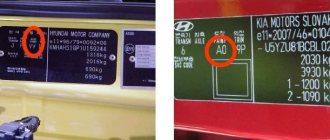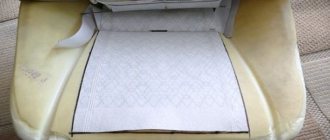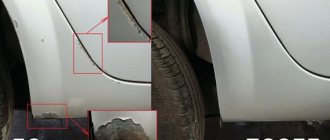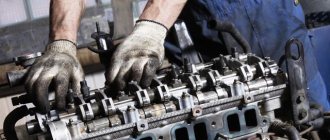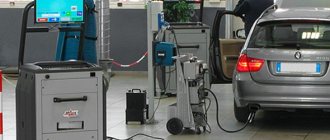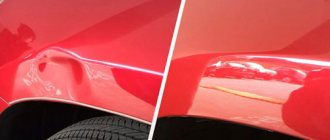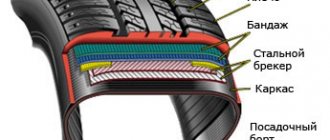Car Seat Upholstery Repair Basics
The interior of a vehicle is constantly exposed to various influences. Drivers often smoke while driving, which often ends with cigarettes or their embers falling onto the upholstery. Passengers may be children who have a special talent for getting everything dirty. In addition, the upholstery may be damaged when transporting large items.
Repairing car seat upholstery is not considered the most difficult type of vehicle maintenance work, so most car enthusiasts prefer to solve this problem on their own.
The interior of the car is subject to regular maintenance, since, in fact, it is the face of its interior decoration. If you have decided to restore the upholstery yourself, first of all, you need to be patient and try to increase your level of responsibility. For this type of repair work, certain tools and materials will be required. The material is selected depending on the fabric with which the seats in the vehicle are upholstered. The main tool will be a screwdriver, used to unscrew most of the fasteners on which the interior trim is installed.
Close attention should be paid to repairing the driver's seat, because it is the most important thing in the car. The more comfortable the driver feels, the safer he is on the road.
Advantages and disadvantages of leather interior
The material perfectly tolerates changes in temperature and humidity, and retains its attractive appearance under active use, but only with high-quality care. It is easy to remove moisture, sand and other small dirt from such upholstery. The disadvantage is the destruction of the leather material when exposed to direct sunlight. The cover loses its integral structure, cracks and tears appear.
It is highly recommended to repair the leather interior of your car by restoring the upholstery on the seats, steering wheel, and various panels yourself.
The price of the procedure will only cost the cost of the necessary materials.
How to properly remove the seat?
Repairing burns in car seats, first of all, involves dismantling the seats. First, the car seat is disassembled by unscrewing the bolts that secure the seat to the floor. After this, the electrical connectors are disconnected.
The second step is removing the old upholstery. To make your work easier, bend the fasteners on the back of the chair and free the edge from the internal structures.
After removing the fastening structures, the cover is removed from the seat. It is worth noting that this process requires some effort, as the inner cushions can make it difficult to pull the cover together.
Repair of car upholstery can begin after successful dismantling of the structure. When restoring upholstery, you must follow the instructions attached by the manufacturer. During repairs, it is recommended to use exactly the materials that make up the interior of the vehicle. Here it is better not to save on price - the stingy one pays twice.
Restoring the tilt mechanism
During intensive use, the moving parts of the mechanisms that are responsible for the position of the back of the car seat often wear out.
This tilting mechanism directly affects the comfort and health of the driver, so its condition must be kept under control by periodically lubricating it and cleaning it from dust.
If this device still fails, then you need to proceed as follows:
- remove the trim at the base of the seat cushion;
- unscrew the fastening bolts, pull out the axle and dismantle the backrest;
- cut off the upper link of the hinges at the base of the back frame by welding, fix the new mechanism at the bottom of the pillow;
- align the new top link with all mounting holes;
- use an axle to connect the cushion and the back of the car seat;
- secure all components by welding.
Leather car seat repair
Repairing leather car seats is rightfully considered the most difficult type of work, since it requires the greatest amount of materials and effort. The materials used are:
- mesh;
- leather analogue;
- repair kit
First of all, the uneven surfaces are sanded using sandpaper, after which a thin plastic mesh is applied in an even layer and filled with liquid leather. After performing these steps, you must wait for the repair material to dry, and only then put the car into operation. Repairing leather car seats may take a little longer than fabric repairs, but the appearance of the interior will please the eye for a long time.
Please note that if there is a need to restore a chair equipped with a heating system, then after disconnecting the cables, the on-board computer will generate an error that cannot be eliminated on your own. In such cases, it is recommended to contact specialists.
How to eliminate tears and cuts on the skin?
Required tools:
Of all those presented in the figure, the “Protectant” cleaner from the manufacturer DoctorWax has the best cleaning quality.
Spatula, thermal powder and scissors.
- Paint for leather and vinyl.
- Small rubber spatulas (set).
- Tweezers.
- Reinforcing mesh.
- Leather cleanser (available as a spray, liquid, cream, foam or leather wipes). Some options for leather cleaners are in the picture above.
- Scissors.
- Fine sandpaper.
- Cooling pads.
- Teflon gasket.
- Textile.
- Iron.
- Brushes or gauze swabs.
Stages of work
Pastes (paints) for leather.
- We clean the surface of the leather with the cleaner of your choice.
- Using scissors, straighten the edges of the cut, freeing them from threads.
- Take sandpaper and sand the cut area.
- Place reinforcing mesh or waterproof fabric inside the cut.
- Apply liquid leather composition on top of the mesh.
- Apply thermal powder using a spatula.
- Place a Teflon strip over the incision.
- We adjust the temperature of the hot iron so as not to burn the skin. We apply a thermal iron to the Teflon plate, due to which the thermal powder will melt and turn into an adhesive composition. You can also use a regular household iron, but to protect the skin, place a layer of cloth on it. The exposure temperature should be about 120 degrees for 10 seconds.
- Cool the heated area using cooling bags. You can use an ice water bottle.
- Remove the fabric and Teflon plate. Fill the empty space with liquid leather.
- Again, apply the Teflon plate and fabric, iron it for 20 seconds.
- Cool the composition as we did in step 9.
- Now you can apply the leather paint using a gauze pad or brush. For seat leather, special pastes or creams are used, or professional paints for leather and vinyl.
Repair of fabric seat upholstery
Repairing fabric car seat upholstery is carried out in two stages, the first of which is applying a patch. Before repairs, special attention must be paid to the choice of fabric - it must match the color of the car's interior. It is also recommended to stock up on a repair kit. To restore the seat, a patch is cut out in the shape of the affected area, and a thin layer of special glue is applied to the gluing site, onto which the cut piece of material is applied.
The second stage - heat treatment - will help eliminate unevenness along the edges. A heat-resistant film is attached to the restored area and ironed with a heated iron. The result of these operations, as a rule, is perfectly smooth upholstery, which, if used carefully, will last for many years.
If a worn hole has formed on the seat, repairing fabric car seats is carried out as follows. First you need to carefully trim the frayed edges of the upholstery, and also clean and degrease the surface that will be repaired. Next, you should wet the upholstery and let it dry a little. After this, the process of preparing the repair material begins - it must be clean and free of foreign particles. Next, the patch is glued and heat treated.
One of the most important points in restoring a car seat is keeping those areas of the seat clean that have a satisfactory appearance. To ensure that the repaired part does not differ from the original material, the adhesive should be applied as carefully as possible. In addition, the adhesive must not be allowed to extend beyond the repair area by more than one millimeter. To do this, they usually use a pattern, along the edges of which a border is drawn with chalk, so that there are no difficulties with the precise application of glue.
Read about how to repair a car trunk lock with your own hands here. The principles of bumper repair without special tools can be found here.
Material and tools
The material for the covering is selected at the request of the car owner. It can be natural or artificial leather, fabric, Alcantara.
Genuine leather is the most expensive material. Leather has high strength and fire resistance. There are high-quality substitutes for genuine leather that are cheaper: eco-leather, Alcantara.
Eco-leather is made from cotton, leather, artificial polymers, and looks and feels no different from leather. It is durable, elastic, and has a choice of different colors, patterns, and textures. Alcantara is a fleecy material similar to suede.
Features of local repair of burnt seats
Repair of burnt car seats is carried out using a certain chemical composition. The cleaned surface is filled in layers until the defect is completely covered. This mixture can be purchased at many auto parts stores. It is worth noting that special attention should be paid to the color and structure of the composition so that the subsequently restored area does not catch the eye. If the car has velor seats, then the top layer of the mixture should be covered with fibers that imitate pile.
When repairing burns in leather car seats, the hole should also be filled with a chemical compound, and for shine, a special gel should be applied on top, thanks to which the chair will regain its former shine. The final stage is painting the restored surface.
Is it possible to restore leather car seats?
To restore leather car seats, you can use special repair compounds. They fill tears and defects. As a result, not only the holes are sealed, but also the texture of the skin is restored.
To get this effect:
- You first need to apply a special liquid to the entire part of the seat, which, after drying, repeats the texture of the leather upholstery.
- After this, the resulting patch is carefully removed and placed on the damage point previously filled with polymer mass.
- At the very last stage, an iron is used to iron the repair area through a special Teflon pad.
Thus, by adhering to proven technologies and using high-quality repair compounds and materials, you can quite successfully repair seats on your own.

